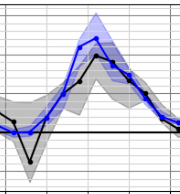Introduction to FLASC#
FLASC provides a rich suite of analysis tools for SCADA data filtering & analysis, wind farm model validation, field experiment design, and field experiment monitoring. The repository is centrally built around NREL's in-house FLORIS wake modeling utility. FLASC also largely relies on the "energy ratio" to quantify wake losses in synthetic and historical data, perform turbine northing calibrations, and for model parameter estimation.
Getting Started#
The easiest way to get started is to install FLASC and then follow the examples. The recommended approach is:
1. Install FLASC#
Install the repository following the instructions in installation.
2. Explore Examples#
You can generate a demo dataset by following the examples in examples_smarteole/. The notebook 02_download_and_format_dataset.ipynb downloads data from a wake steering experiment conducted in 2019. We encourage users to step through the notebooks in examples_smarteole/ in order to develop an understanding of FLASC's capabilities using a dataset from a real field experiment.
Additional useful examples can be found in examples_artificial_data/, where we intentionally introduce "challenges" for the FLASC tools to solve using artificially-generated data. This provides a good way for users to get to know the FLASC tools in more depth. Again, we recommend stepping through the examples in the subdirectories in their numerical order.
3. Workflow Overview#
Roughly speaking, the examples in both examples_smarteole/ and examples_artificial_data demonstrate the FLASC modules in the order:
flasc.data_processing- Import and filter SCADA dataflasc.analysis- Energy ratio analysis and uplift calculationsflasc.model_fitting- Calibrate FLORIS models to SCADA data
and use flasc.utilities throughout for supporting functions.
FLASC Package Structure#
FLASC consists of multiple modules, each serving specific analysis needs:
flasc.data_processing#
This module contains functions that support importing and processing raw SCADA data files. Data is saved in feather format for optimal balance of storage size and load and write speed.
Functions include filtering data by wind direction, wind speed and/or TI, deriving the ambient conditions from the upstream turbines, all the while dealing with angle wrapping for angular variables. Outliers can be detected and removed at the turbine level. Filtering methods include sensor-stuck type of fault detection and analysis of the turbine wind speed-power curve.
Also included are functions to downsample, upsample and calculate moving averages of a data frame with SCADA and/or FLORIS data. These functions allow the user to specify which columns contain angular variables, and consequently 360 deg wrapping is taken care of. It also allows the user to calculate the min, max, std and median for downsampled data frames. It leverages efficient functions inherent in pandas and polars to maximize performance.
Finally, functions are provided to detect northing bias (caused by miscalibrated yaw encoders) in turbine data.
flasc.analysis#
This module contains classes to calculate and visualize the energy ratio as defined by Fleming et al. (2019). The energy ratio is a very useful quantity in SCADA data analysis and related model validation. It represents the amount of energy produced by a turbine relative to what that turbine would have produced if no wakes were present. See energy ratio for more details. Also included are methods for calculating the total power uplift in a comparative field experiment.
flasc.model_fitting#
This module provides automated calibration of FLORIS wake models to SCADA data through the ModelFit framework. It includes modular cost functions, optimization algorithms, and tools for parameter sensitivity analysis. See model fitting for comprehensive documentation.
flasc.utilities#
This module contains utilities that support the other modules within FLASC. These utilities help to interface with FLORIS and calculate a large set of floris simulations for different atmospheric conditions, yaw misalignments and/or model parameters. It also includes two functions to precalculate and respectively interpolate from a large set of model solutions to speed up further postprocessing.
Also included are functions to estimate the timeshift between two sources of data, for example, to synchronize measurements from a met mast with measurements from SCADA data. The module also includes a function to estimate the offset between two timeseries of wind direction measurements. This is useful to determine the northing bias of a turbine if you know the correct calibration of at least one other wind turbine. Finally, this module also contains a function to estimate the atmospheric turbulence intensity based on the power measurements of the turbines inside a wind farm.
Additionally, visualization tools can be found in flasc.visualization and flasc.yaw_optimizer_visualization.
Literature#
See [Doekemeijer et al., 2022] and [Bay et al., 2022] for practical examples of how the flasc repository is used for processing and analyses of historical SCADA data of three offshore wind farms.
C J Bay, P A Fleming, B M Doekemeijer, J King, M Churchfield, and R Mudafort. Addressing deep array effects and impacts to wake steering with the cumulative-curl wake model. Wind Energy Science Discussions, 2022:1–28, 2022. In preparation.
B M Doekemeijer, E Simley, and P A Fleming. Comparison of the gaussian wind farm model with historical data of three offshore wind farms. Energies, 2022. In review.
Citation#
If FLASC played a role in your research, please cite it. This software can be cited as:
FLASC. Version 2.0.1 (2024). Available at NREL/flasc.
For LaTeX users:
@misc{flasc2024,
author = {NREL},
title = {FLASC. Version 2.0.1},
year = {2024},
publisher = {GitHub},
journal = {GitHub repository},
url = {https://github.com/NREL/flasc},
}
Questions#
For technical questions regarding FLASC usage, please post your questions to GitHub Discussions on the FLASC repository. Alternatively, email the NREL FLASC team at paul.fleming@nrel.gov <mailto:paul.fleming@nrel.gov>_ or michael.sinner@nrel.gov <mailto:michael.sinner@nrel.gov>_.
